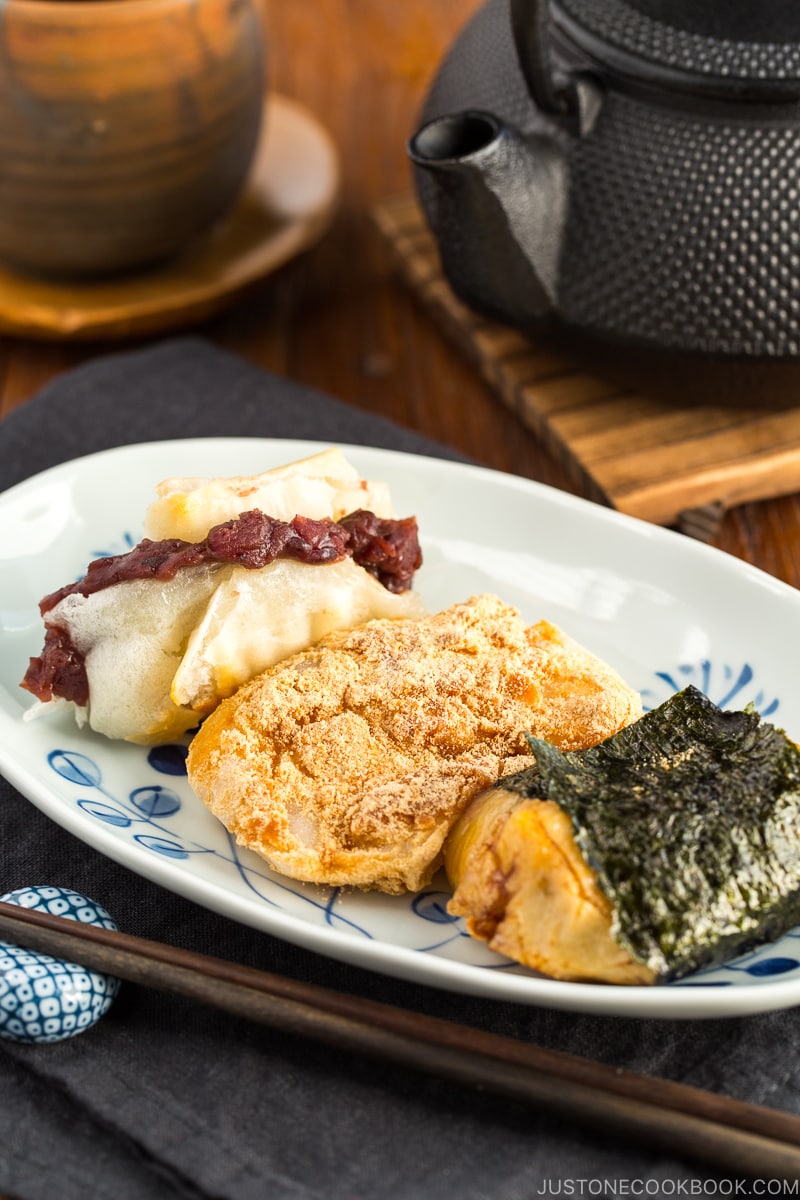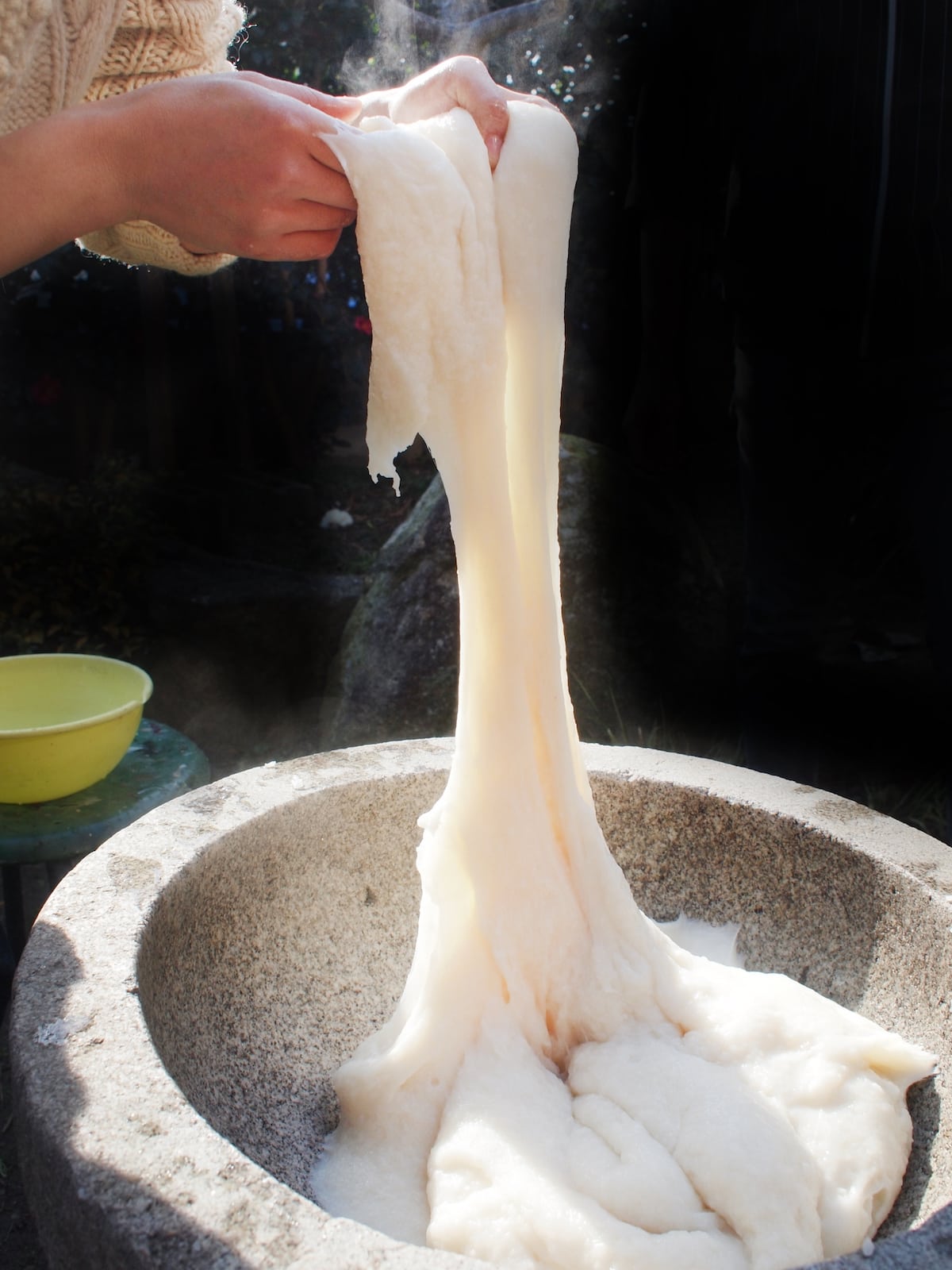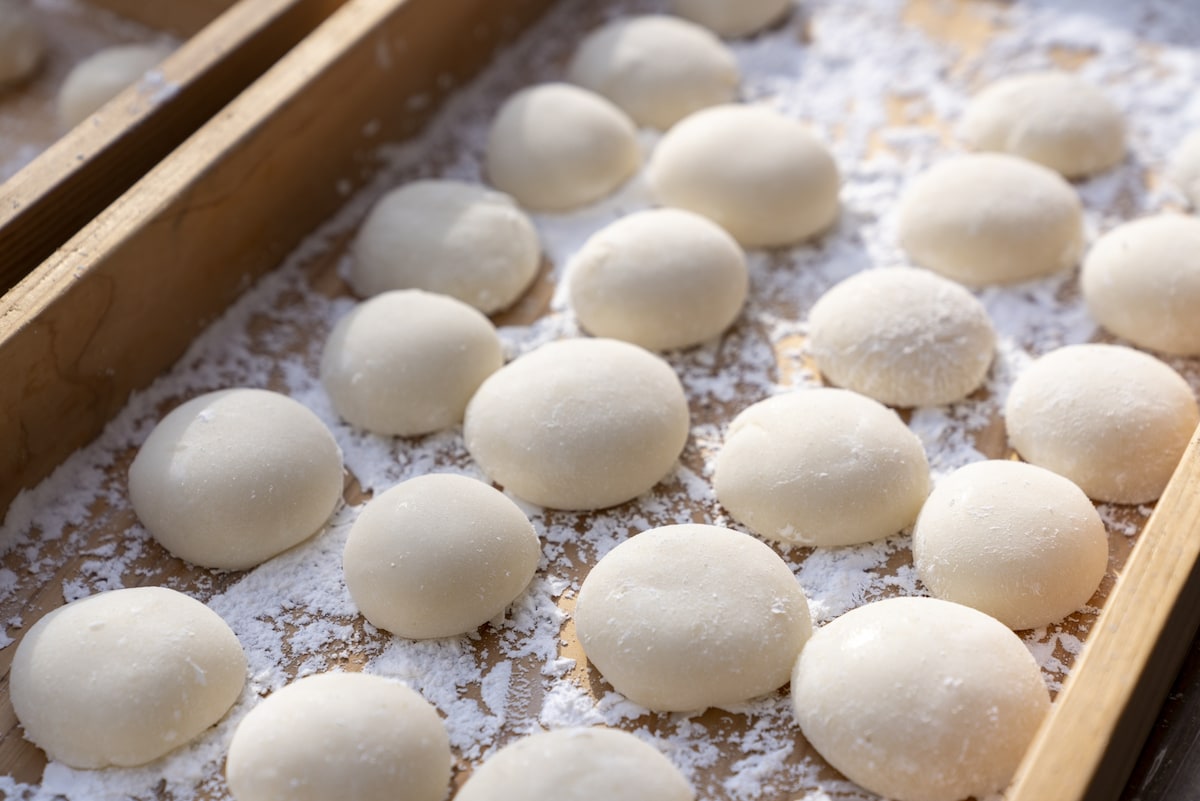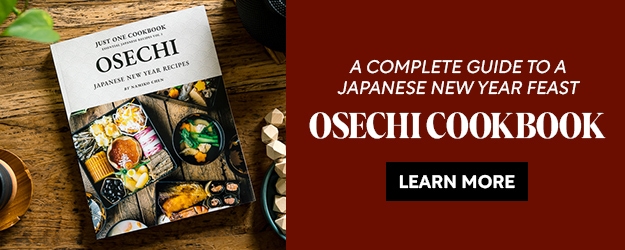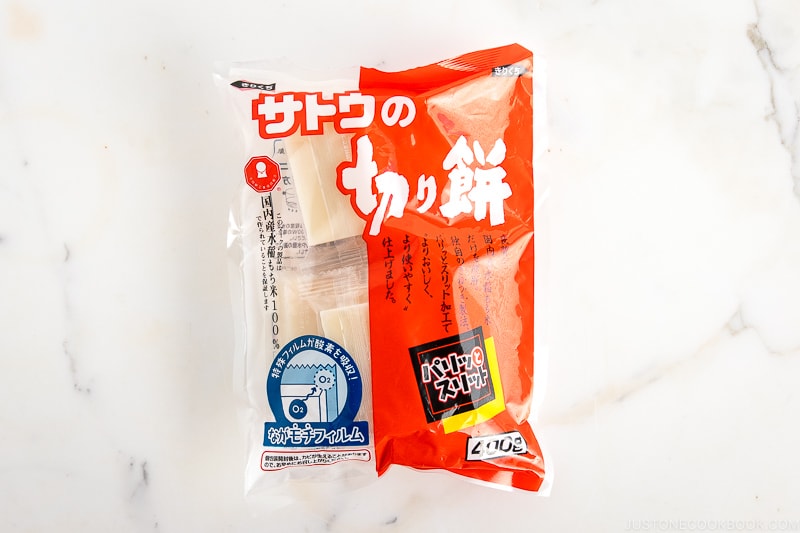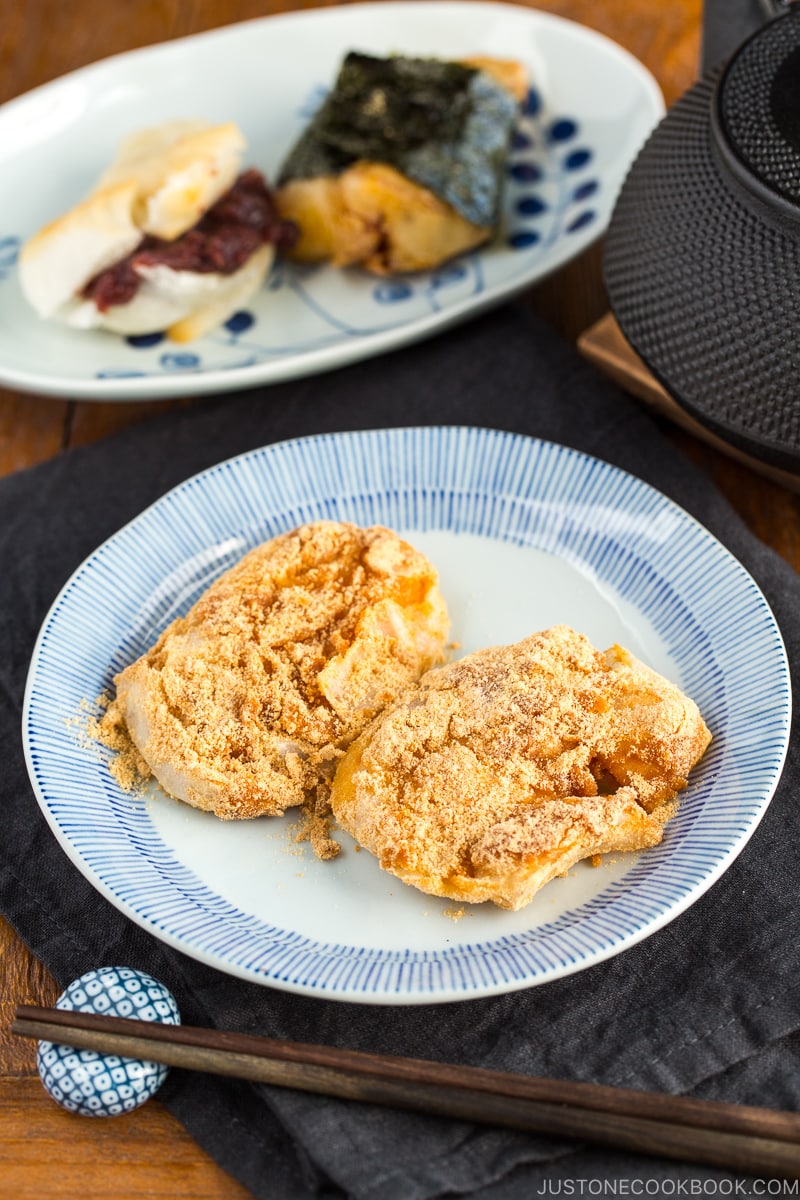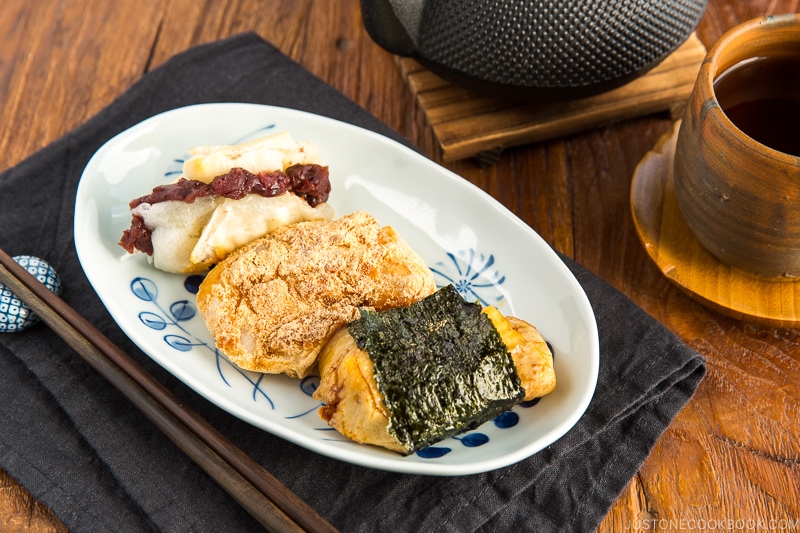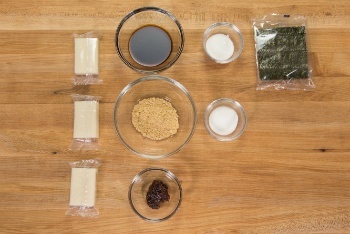After I shared my recipe for the Japanese New Year mochi soup called Ozoni, I received a lot of feedback from my readers about the mochi that I added to this savory soup. They were surprised that I added it because they believe that mochi is a sweet food. That made me realize that Japanese and non-Japanese think of mochi quite differently. In this post, I’ll explain the difference between sweet mochi and plain mochi. I’ll also introduce you to three delicious and easy ways to enjoy plain mochi at home. These are the classic ways that Japanese households prepare this traditional food that highlight mochi’s best qualities. I hope you enjoy trying them all!
Plain Mochi vs. Daifuku
When you hear the word “mochi,” you might think of the round confectionery that’s stuffed with a sweet filling. It could be a traditional red bean paste or white bean paste with or without green tea flavor, or a filling with modern flavors like chocolate, strawberry, and mango. In Japan, we usually call that type of sweet mochi daifuku. When we say “mochi” in Japan, it usually implies plain mochi that’s either freshly made or packaged and purchased at supermarkets.
What is Mochi?
Mochi is a Japanese rice cake made of mochigome (糯米), a short-grain japonica glutinous rice. The cooked rice is pounded into a paste. Then, the hot paste is molded into desired shapes such as round-shaped cakes called maru mochi. It has a sticky, chewy texture and hardens as it cools. In Japanese cooking, we use freshly made mochi for either a savory dish or sweet treat. For savory dishes, we add plain mochi to a soup like Ozoni, hot udon noodle soup such as Chikara Udon, and Okonomiyaki. For sweet snacks and desserts, make it into Mochi Ice Cream, Zenzai (Sweet Red Bean Soup), Strawberry Daifuku, and more. Making fresh mochi from glutinous rice takes a lot of time and effort, so most families don’t make it from scratch anymore. If we want to enjoy freshly pounded mochi, we usually attend a mochi pounding event. To make it fresh at home, some folks buy a Japanese mochi pounding machine for this task; some Japanese bread makers have a mochi-pounding option, too. We can also make mochi with a stand mixer.
Convenient Kiri Mochi for Home Use
When we eat mochi at home, we buy kiri mochi (切り餅, sometimes kirimochi) from the grocery store. This plain mochi is dried, cut into blocks, and individually packaged in plastic bags. It’s a shelf-stable product that you can keep in the pantry for a convenient mochi snack anytime of year as well as during the Japanese New Year. Each family cooks the mochi differently. My family in Japan loves crispy toasted mochi rather than boiled mochi, so we always toast it first before flavoring it. You can also grill it over an open flame to make yakimochi. Others will pan fry the mochi to grill it. Read the notes section of the recipe for microwaving and boiling methods. Today, I’ll show you the 3 most popular recipes to enjoy mochi using kirimochi:
Anko mochi (餡子餅) – sweet red bean paste stuffed inside the mochi. Kinako mochi (きな粉餅) – mochi coated with a roasted soybean flour (kinako) and sugar mixture. Isobeyaki (磯辺焼き) – mochi coated in a soy sauce and sugar mixture and wrapped with nori seaweed. Most people prefer it without sugar, but my family always adds it. I assume this is based on a family’s preference and not on regional differences.
Ingredients You’ll Need
plain Japanese rice cake (mochi) – kiri mochi; you can also use warm, fresh Homemade Mochi and skip toasting)
For the Kinako Mochi
kinako (roasted soybean flour) sugar hot water
For the Isobeyaki
soy sauce sugar – optional nori (dried laver seaweed) – I use the seasoned type called ajitsuke nori
For the Anko Mochi
sweet red bean paste (anko) – use store-bought or make homemade in a pot on the stove or with a pressure cooker
How To Make Three Flavors of Mochi at Home
Which is your favorite? When I was growing up, I couldn’t pick just one. For Japanese New Year’s Day, I used to eat six pieces of mochi—two in ozoni, two anko, one kinako, and one isobeyaki. I wish I was young again so I could eat six pieces of mochi in one sitting without worrying about increasing my waistline! Wish to learn more about Japanese cooking? Sign up for our free newsletter to receive cooking tips & recipe updates! And stay in touch with me on Facebook, Pinterest, YouTube, and Instagram. Editor’s Note: This post was originally published on January 19, 2015. The post has been published in December 2021.
